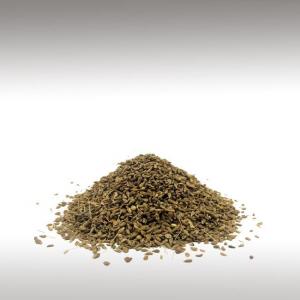
ANISE SEED ESSENTIAL OIL (PIMPINELLA ANISUM) - ESSENTIAL OILS

BASE / GENERAL DATA
Information submited: March 24, 2015 By: OperaDreamhouse
Botanical Name: Pimpinella anisum
Common Method of Extraction: Steam distillation
Part Typically Used: Seed
Color: Clear
Consistency: Thin
Perfumery Note: Middle
Strength of Initial Aroma: Fresh, sweet, spicy, licorice-like
Do not confuse Anise seed oil (Pimpinella anisum) with Anise Star oil (Illicium verum) which is produced from the fruit of a tree.
Anise (Pimpinella anisum), also called Aniseed, is a flowering plant in the family Apiaceae native to the eastern Mediterranean region and Southwest Asia. Its flavor has similarities with some other spices, such as star anise, fennel, and liquorice.
In this country Anise has been in use since the fourteenth century, and has been cultivated in English gardens from the middle of the sixteenth century, but it ripens its seeds here only in very warm summers, and it is chiefly in warmer districts that it is grown on a commercial scale, Southern Russia, Bulgaria, Germany, Malta, Spain, Italy, North Africa and Greece producing large quantities. It has also been introduced into India and South America.
Anise is one of the herbs that was supposed to avert the Evil Eye.
Anise is a herbaceous annual plant growing to 0,9 m or more tall. The flowers are white, approximately 3 mm in diameter, produced in dense umbels. The fruit is an oblong dry schizocarp 3–6 mm long, usually called "Aniseed".
Anise plants grow best in light, fertile, well-drained soil. The seeds should be planted as soon as the ground warms up in spring. It has a pungent liquorice-like smell and is also known as Anise and Sweet cumin.
The fruit, or so-called seeds. When threshed out, the seeds may be easily dried in trays, in a current of air in half-shade, out-of-doors, or by moderate heat. When dry, they are greyish brown, ovate, hairy, about one-fifth of an inch long, with ten crenate ribs and often have the stalk attached. They should be free from earthy matter. The taste is sweet and spicy, and the odour aromatic and agreeable.
Essential oil yielded by distillation is generally around 2-3% and anethole makes up 80-90% of this.
Common Method of Extraction: Steam distillation
Part Typically Used: Seed
Color: Clear
Consistency: Thin
Perfumery Note: Middle
Strength of Initial Aroma: Fresh, sweet, spicy, licorice-like
Do not confuse Anise seed oil (Pimpinella anisum) with Anise Star oil (Illicium verum) which is produced from the fruit of a tree.
Anise (Pimpinella anisum), also called Aniseed, is a flowering plant in the family Apiaceae native to the eastern Mediterranean region and Southwest Asia. Its flavor has similarities with some other spices, such as star anise, fennel, and liquorice.
In this country Anise has been in use since the fourteenth century, and has been cultivated in English gardens from the middle of the sixteenth century, but it ripens its seeds here only in very warm summers, and it is chiefly in warmer districts that it is grown on a commercial scale, Southern Russia, Bulgaria, Germany, Malta, Spain, Italy, North Africa and Greece producing large quantities. It has also been introduced into India and South America.
Anise is one of the herbs that was supposed to avert the Evil Eye.
Anise is a herbaceous annual plant growing to 0,9 m or more tall. The flowers are white, approximately 3 mm in diameter, produced in dense umbels. The fruit is an oblong dry schizocarp 3–6 mm long, usually called "Aniseed".
Anise plants grow best in light, fertile, well-drained soil. The seeds should be planted as soon as the ground warms up in spring. It has a pungent liquorice-like smell and is also known as Anise and Sweet cumin.
The fruit, or so-called seeds. When threshed out, the seeds may be easily dried in trays, in a current of air in half-shade, out-of-doors, or by moderate heat. When dry, they are greyish brown, ovate, hairy, about one-fifth of an inch long, with ten crenate ribs and often have the stalk attached. They should be free from earthy matter. The taste is sweet and spicy, and the odour aromatic and agreeable.
Essential oil yielded by distillation is generally around 2-3% and anethole makes up 80-90% of this.

SPIRITUAL PRACTISES DATA

MEDICINE / HEALTH DATA

BEAUTY / COSMETICS DATA

FOOD / COOKING DATA
COMMENTS
No comments.


